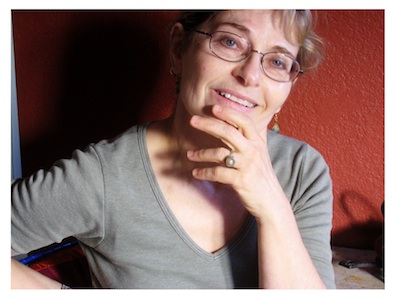By Diana Brement ,
JTNews Columnist
After 26 years in Seattle, Leslie Fried has moved to Anchorage to be curator of the Alaska Jewish Museum.
Founded in 2004, the museum is just now becoming a physical reality. An inaugural exhibit opens this November in a small building in a larger complex known as the Alaska Jewish Campus. In addition to the museum, the complex includes a cultural center, a Chabad preschool and synagogue. Although the museum was spearheaded by Rabbi Yosef Greenberg of Chabad, it is “a separate non-profit entity run by our own separate board,” says Leslie, adding that “one of my goals is…to bring together all the different members of the community.”
The museum will introduce Alaskans to Jewish culture and history, celebrate it, and provide a safe place for the Jewish community’s cultural artifacts. As a heritage museum, similar to many around the country, it will also promote “diversity and tolerance.”
Leslie spent many of her years in Seattle working as a scenic artist for a number of local theaters and was the head painter for Intiman for five seasons from 1993 to 1998. She also ran her own painting and design company, doing special finishes and murals for architects and interior designers.
In 2003, she was diagnosed with heavy metal poisoning, forcing her to change careers. She returned to school to finish the Fine and Applied Arts degree she’d started in 1978 at the University of Oregon, and went “immediately into graduate school at the University of Washington,” getting a Master’s in Library and Information Science and a graduate certificate in Museology.
While at the UW she worked on the Samuel E. Goldfarb collection (Goldfarb was music director at Temple De Hirsch Sinai for over 30 years), and helped write a report for the Washington State Jewish Historical Society on Jews of Southeast Seattle. Stored in the City of Seattle’s archives, it can be found at HistoryLink.org.
Leslie calls her current position “a fortuitous melding of influences,” in which she can use all of her skills. Being “in the arts for years, working in theater, working in exhibits, getting my library degree…[and] graduate certificate,” all dovetail nicely with her “interest in Judaica, my family, and in the arts.”
Leslie is very excited about the first two exhibits, which include “Ruth Gruber, Photojournalist,” created by the International Center of Photography, which will be hosted by the Anchorage Museum. The second will tell the story of Operation Magic Carpet, the airlift of over 47,000 Yemenite Jews from 1948-1950, who were flown to Israel by Alaska Airlines pilots.
That second exhibit had personal resonance because Leslie’s father was a pilot and part of the “Machal Boys” who airlifted airplane parts and other supplies into Palestine before Israeli independence. He then served in the Israeli Air Force and became an El Al pilot after that, which took the family from Israel, where Leslie was born, to England and finally back to New York, where she was raised on Long Island.
Leslie says winter has proven to be one of her biggest challenges. She landed in Anchorage at the “beginning of one of the worst winters for a long time,” and “had to learn how to drive again.” She had to get studded snow tires for her car and cleats for her shoes in order to get around, but adds that up there, “there’s a feeling that whatever you want to do can be done.”
If you’re heading to Alaska and want to visit the museum, or would just like more information, email Leslie at [email protected].
| | |
Speaking of Samuel Goldfarb, we’ve received word that his great-grandson Alec Goldfarb is following in Sam’s musical tradition. Alec won Downbeat Magazine’s Outstanding High School Music Performance Award for his original sheet music composition, “Pendulum.”
A resident of Mt. Laurel, New Jersey, Alec, 16, is the son of Keith and Linda Goldfarb and will be a senior in high school. He plays jazz, and a little Motown and R&B with his group, The Alec Goldfarb Trio.
Great-grandpa Sam may be best known as the composer of “The Dreidel Song,” (you know, “I have a little dreidel, I made it out of clay”) and many other liturgical pieces still used in synagogues today, some of which were composed and arranged in partnership with his brother, Israel.
